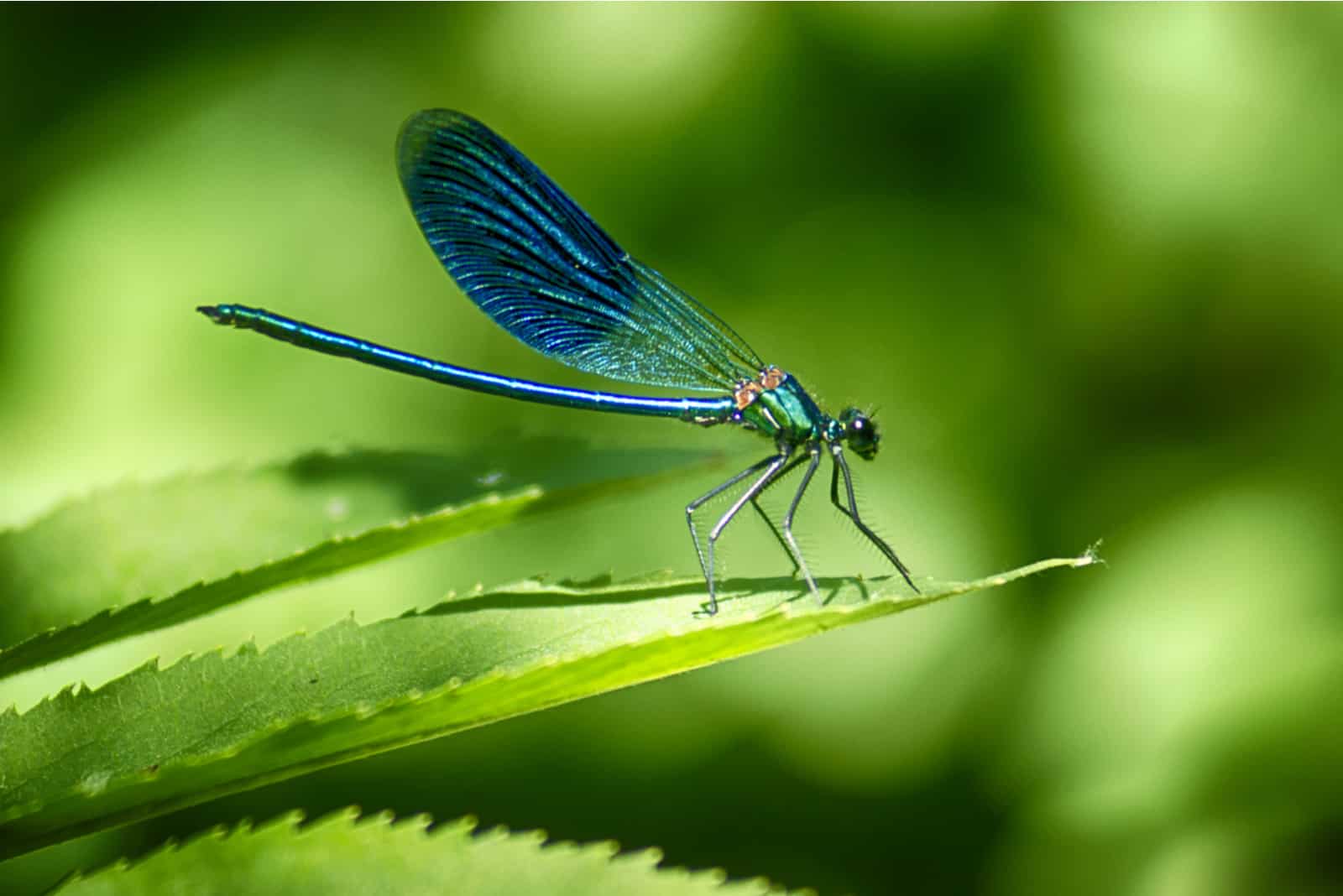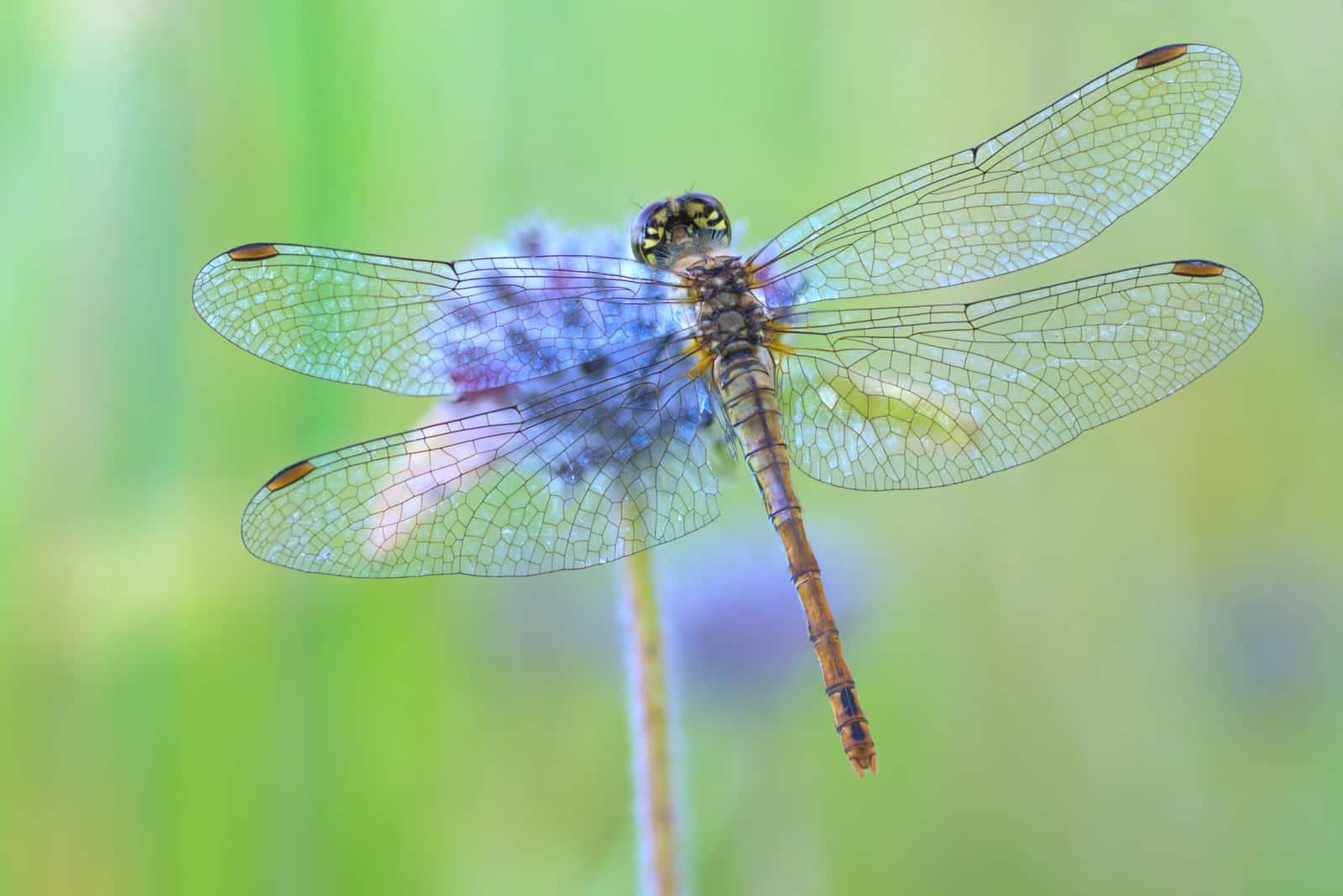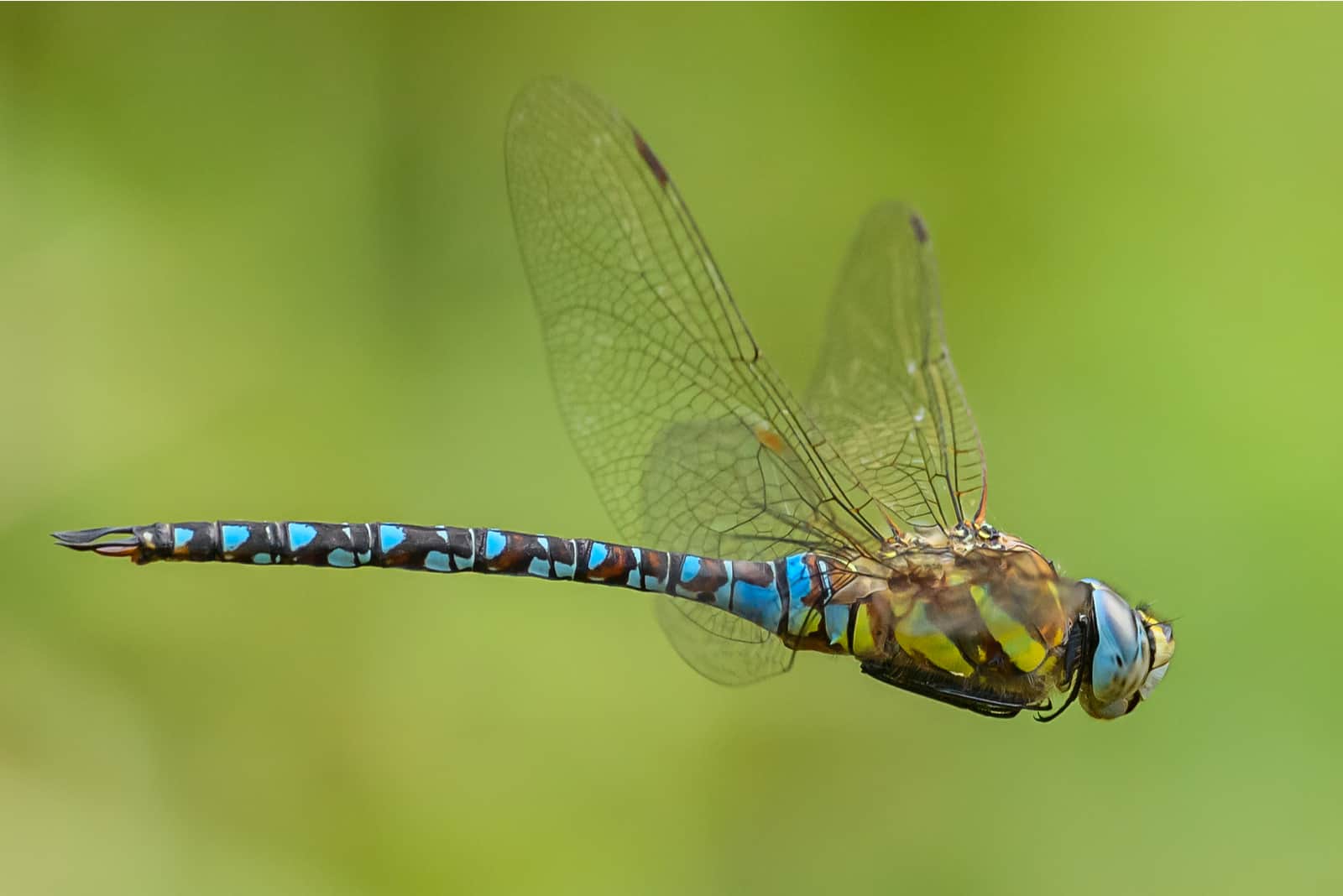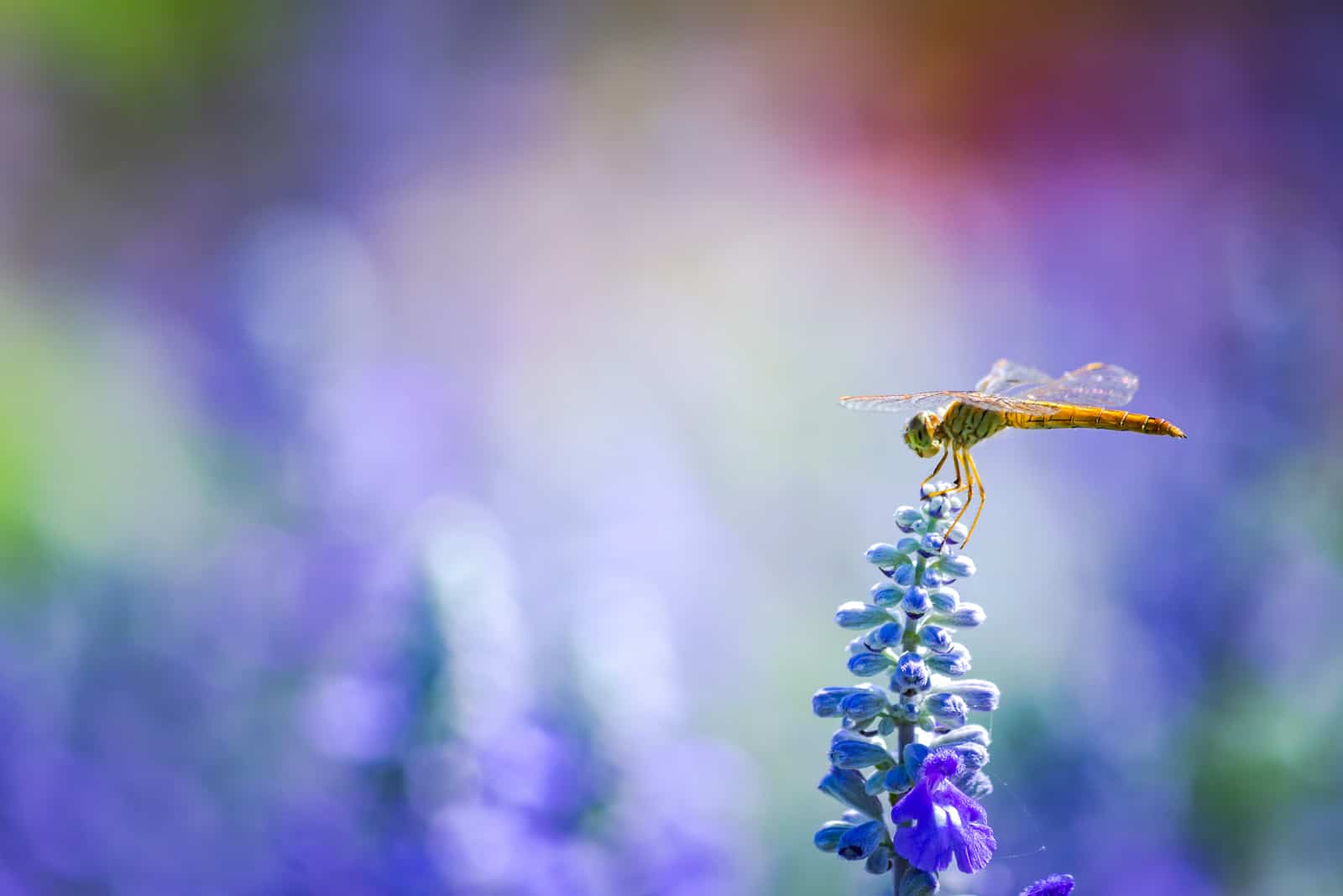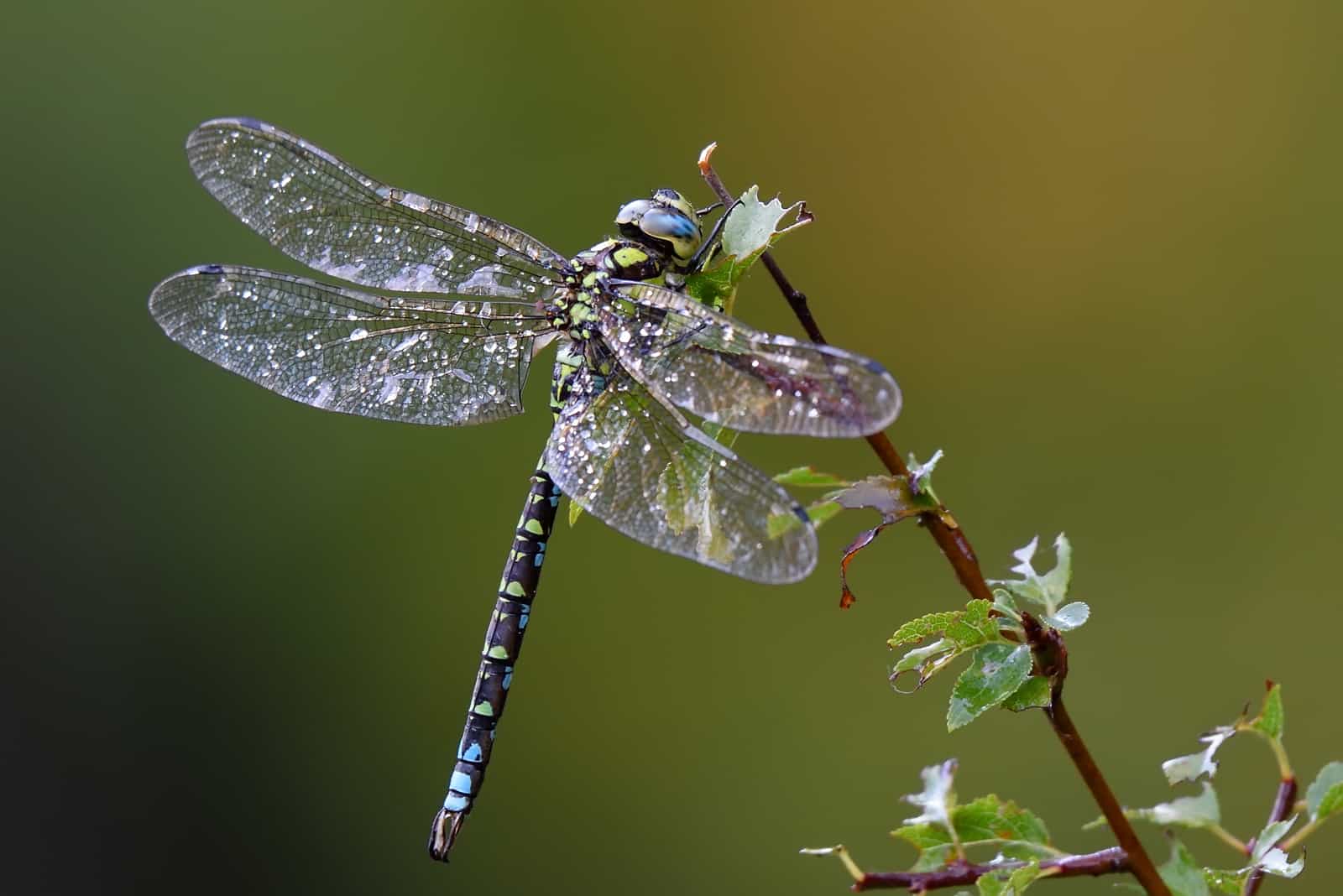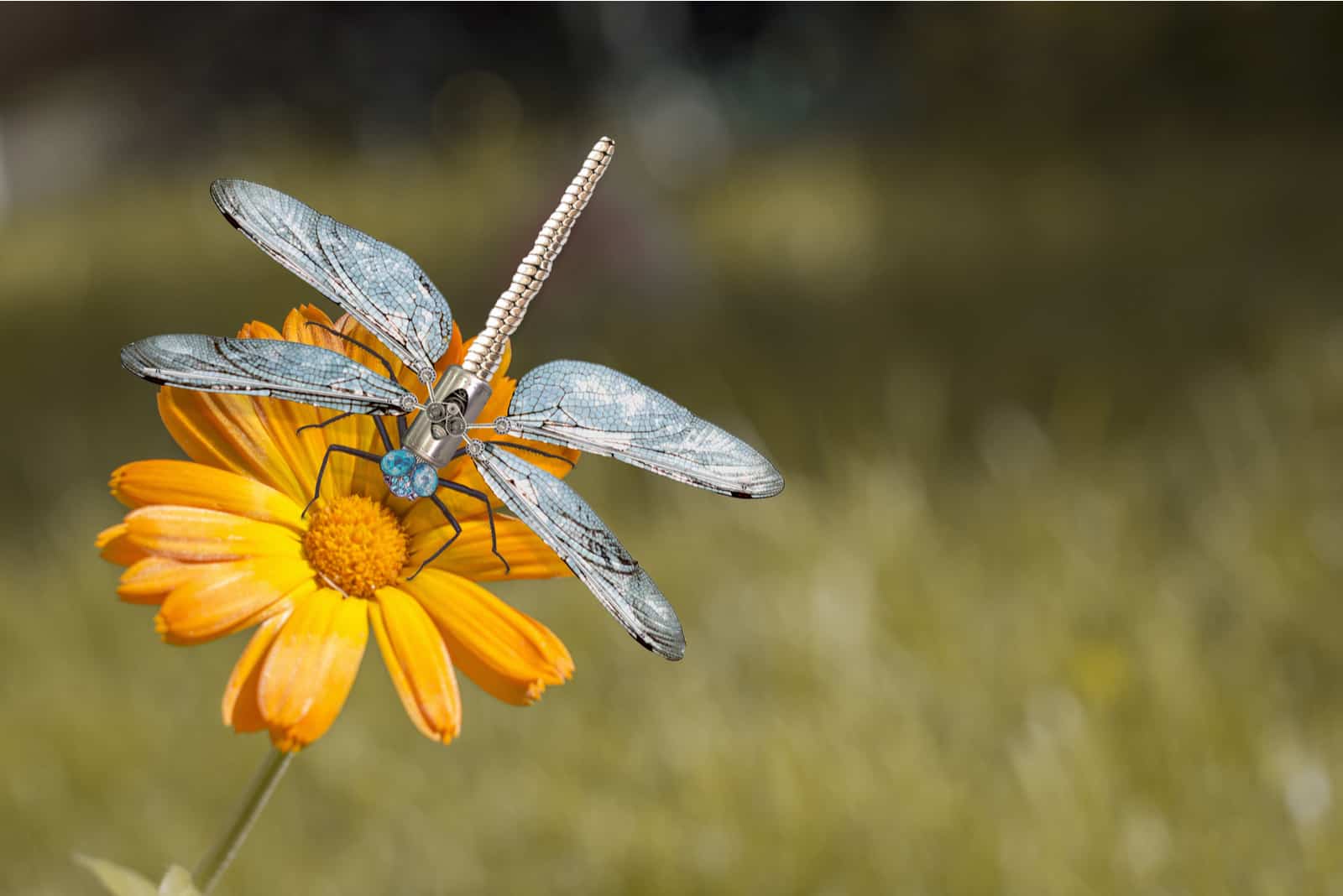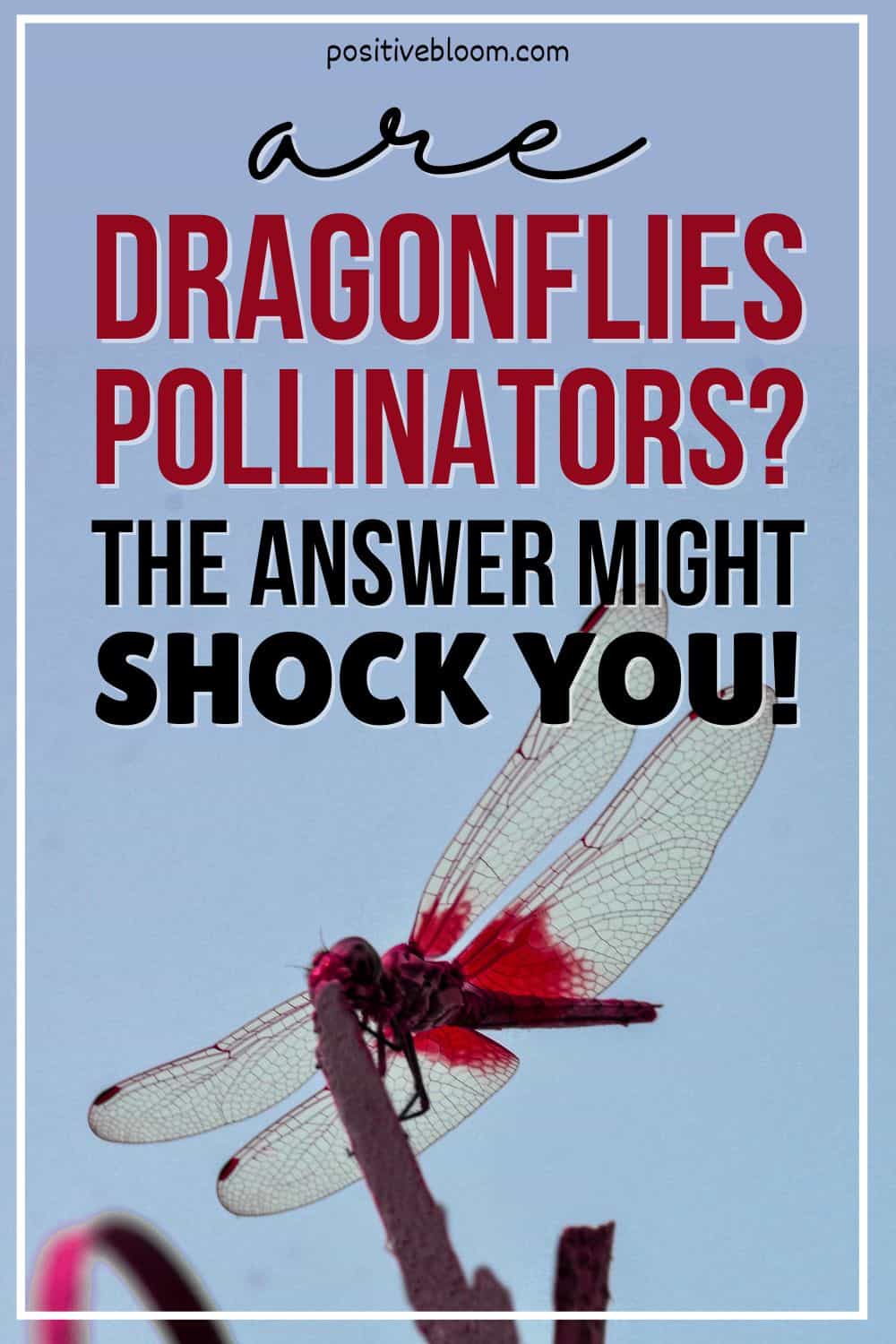The coolest insects in the world must be dragonflies! I mean, come on, they even have the word “dragon” in their name!
Some gardeners try to attract dragonflies to their gardens because they symbolize adaptability, transformation, and wisdom. It’s always special to see dragonflies, as they are rare insects usually found around water, though they will sometimes pay a visit to your garden, especially if you have a beautiful one with lots of flowers!
Now, the true question is: “Are dragonflies pollinators?”.
If you have spotted dragonflies around your flowers, and now you’re wondering if they are able to pollinate them and contribute to your garden’s vivacity, read on to discover the answer to that question and much more!
But, Honestly, Are Dragonflies Pollinators?
Let me get straight to the point — dragonflies are not pollinators.
People often think that dragonflies are pollinators because they like to hang out around flowering plants, however, they have something else on their minds – murder!
Don’t worry, they aren’t after you! They are actually eating the various insects that visit your garden and flowers, and insect pollinators in particular. These are food to dragonflies, who are on the hunt in your garden.
Dragonflies visiting your garden can be both a good and a bad thing. In addition to what they symbolize, they often feed on bad insects that ruin flowers, which is obviously a good thing. However, they tend to eat insect pollinators, which are good insects that are necessary for pollination and blooming.
Dragonflies can pollinate flowers in some cases, though this is purely by chance. It happens if there is still some pollen on a dragonfly once it lands on another flower. Nonetheless, this rarely happens because the pollen gets dispersed while the dragonfly is flying.
I have come across various reports that dragonflies are alternative pollinators, however, that information is misleading, so we will get to the bottom of this!
Now, let’s talk about pollination and what an insect needs in order to pollinate a flower.
What Is Pollination?
If you have come a long way on your gardening journey, then you probably know the answer to this question, and maybe you have even pollinated some flowering plants all by yourself!
Pollination is the process of transferring pollen from the male part of a flower (anther) to the female part of a flower (stigma) in order for fertilization to occur. The outcome of fertilization is seeds and fruit.
Pollen has to end up on a stigma one way or another, however, it’s usually done by insect pollinators or the wind. Sometimes, plants are able to self-pollinate because they have both female and male organs.
If you live in an area with a low insect pollinator population, you have probably had to pollinate flowers yourself — especially plants that are fruit-bearing. No pollination means no fruit!
So, Why Aren’t Dragonflies Pollinators?
Dragonflies aren’t pollinators because of their unique morphology. If we take a look into the honey bee’s morphology, for instance, we see that they have tiny legs which enable them to collect pollen sacs. They carry them to the next flower and the pollen falls out of the sac.
Dragonflies simply don’t have any feature that can catch and carry pollen to the next flower. If there is some pollen left on them, it is purely by chance.
Check out this video about bee pollination:
What Are Some Important Pollinators?
• Bees (native bees, honeybees)
• Birds (hummingbird)
• Butterflies
• Beetles
• Wasps
• Flies
• Bats
• Moths
• Small mammals
More About Dragonflies: Features & Symbolism
Dragonflies are one of the oldest organisms on the planet, dating back over 300 million years — they’re even older than dinosaurs!
Dragonflies belong to the insect order, Odonata, and they are carnivores that feed on small insects like mosquitoes, flies, midges, aphids, termites, and ants. While they are still in the water at the beginning of their life cycle, dragonfly larvae, also referred to as dragonfly nymphs, will eat anything smaller than them, including tadpoles, mosquito larvae, small fishes, and numerous other aquatic insects.
They require lots of food to grow, and once they mature, adult dragonflies can eat about 100 mosquitoes a day!
Talk about free pest control!
Other names for dragonflies are devil’s darning needles, snake doctors, and mosquito hawks.
Dragonflies Features
As we already mentioned, they start their life underwater at a stage known as a nymph or naiads. They go through metamorphosis and become adult dragonflies, which are known as creatures of the sun.
An interesting thing about them is that they need sun and warm weather to fly. They can even be spotted resting on water lilies or logs when the clouds cover the sun!
Cold weather immediately kills dragonflies, which is why we often see them during spring and summer. Adult dragonflies will mate in the air and females will lay their eggs near water, either in the mud by the water’s edge or in water plants (cattail, for instance).
Dragonflies have legs they mainly use for climbing, and not as much for walking (I mean, why would they walk when they can fly?). They are professional hunters with great speed and vision, and they can see a full 360 degrees and fly 35 miles per hour!
The majority of species of dragonflies primarily live around small ponds, wetlands, water, and streams, though they can sometimes pay you a visit elsewhere whilst on a hunt!
Dragonflies are often mistaken for damselflies, so let’s take a look at their differences.
Dragonflies vs Damselflies
Both Dragonflies and Damselflies belong to the order Odonata, however, they are not the same species!
Damselflies are somewhat smaller than dragonflies, and they have wings that are the same size and folded back, while dragonflies have differently shaped wings that extend from the side.
It seems that they like to share their prey, as you can often spot both of them in the garden or near a pond at the same time.
Benefits Of Dragonflies
Gardeners often say that if you see a dragonfly in your garden, it means that it’s a good garden with lots of healthy and lush plants growing around!
If we exclude the symbolism, if you spot a dragonfly in your garden, then it is probably there to eat. These little creatures regularly hunt, and an adult dragonfly can eat about 100 mosquitos per day, which is good news for you and your plants.
They eat lots of bad insects that can attack your plants, so you don’t have to apply any pesticides if there are a lot of dragonflies around. However, they will also eat pollinator insects if they can, which reduces their pollination services, though it is unlikely that they will attack wasps instead of mosquitos.
An imbalanced ecosystem in a pond with numerous dragonfly naiads that don’t have many water plants or small insects will completely ruin the small fish population. So, if you are a water gardener with a small pond in your garden, then a good balance between different populations is the key to keeping everyone happy and healthy!
Symbolism & Legends
Well, of course there is a story behind their name — they literally have dragon in them!
According to legend, the Dragonfly was originally a Dragon with scales similar to a Dragonfly’s wings. The dragon was wise, and with its flaming breath, flew through the night giving light. The art of magic and the illusion of changing shape were brought forth by the Dragon’s breath. Then, the Dragon became lost in its own facade, the Coyote fooled the Dragon into changing form, and its new body took on the shape of a Dragonfly. The dragon lost its power after accepting the challenge to prove its strength and magical prowess.
The dragonfly symbolizes water purity to the Navajo Indians, while in Dakota mythology, it’s an illusion because the wings are moving so fast that the human eye cannot see them. In Zuni legend, it is believed that they are shamanistic insects with supernatural powers.
In most parts of Europe, dragonflies are often associated with fairies, and it is believed that a dragonfly can lead you to the fairy’s magical land, where you can shift between different dimensions.
Now that we have covered the legends, let’s take a look at some of the important symbolism:
“Defeat of Self Created Illusions” — refers to the iridescence, which is the property of a body displaying different colors when looked at from different angles. This feature is recognized and held in high regard as the end of one’s own self-created illusions and a clear view of life’s reality. Iridescence’s magical property is linked to the discovery of one’s own skills by revealing the true self and dispelling doubts about one’s own sense of self. This also implies self-discovery and the release of inhibitions.
“Power and Poise” — refers to the dragonfly’s ability to move in all six directions at high speed. They can move about 35 miles per hour like helicopters or hummingbirds. They move their wings so fast that we can’t even see it with our own eyes! An inspiring thing is that they move with so much elegance and grace even though they have 20 times more power in their wings compared to other insects!
“The opening of one’s eyes” — refers to the dragonfly’s ability to see 360 degrees around itself. This represents the mind’s unrestricted vision and the ability to perceive beyond the boundaries of the human self. It also represents a man or woman rising above consumerism to be able to see beyond the commonplace into the vastness that is our Universe, as well as our own brains.
“Maturity and a Depth of character” — refers to their magnificent change. Everywhere in the world, a dragonfly symbolizes the change of perspective and self-realization. It encourages us to understand a deeper meaning of our lives, and also to improve our mental and emotional states.
I had no clue that a single insect could have so many meaningful things associated with it! In some cultures, dragonflies also represent prosperity and good luck. Fishermen are known to say that dragonflies indicate a good fishing spot.
How To Attract Dragonflies To Your Garden
Whether you are a spiritual person who truly believes in dragonfly symbolism or you just want to get rid of annoying insects, attracting dragonflies in your garden is always a great option!
There are a few things that you can do to attract dragonflies. We’ll begin with the most obvious one, which is installing a pond. However, there are a few easier and cheaper options.
Dragonflies also have predators you must beware of.
Let’s find out more.
1. A Small Pond
What better way is there to attract these little creatures than by recreating their natural habitat?
You can even breed your own dragonflies in the pond, and others will pay you a visit as well.
Although this seems like a hard task, it can actually be done in a matter of days — all you need is some extra space and motivation to do the job!
Your new pond should have a diameter of around 20 feet and a depth of about 2 feet, though it should be more shallow near the water’s edges. This type of pond can support the growth and development of dragonfly larvae to adulthood.
The pond should be in a sunny location. Avoid putting in any larger fish at the beginning as they feed on small dragonfly nymphs. Bear in mind that the key to a successful pond ecosystem is balance!
Check out this video for clearer instructions about installing a pond in your garden:
2. Install A Water Feature
If you don’t want to spend your time, energy, and money on installing a new pond, other water features will work just as well!
Any type of water source can be used, though you can decorate your garden with a fountain that attracts dragonflies at the same time. It is important that you use fresh water instead of salt water and to place the water feature in a sunny location.
You should avoid adding any fish or frogs as they may eat your dragonfly nymphs — especially because they can spend years at this stage.
The water should be kept clean and free of any chemicals and pesticides that could kill a developing dragonfly. Keep your water feature out of the wind because the water plants might get blown away!
Even though ponds are great, I always prefer to install a water feature because it can make your garden look more luxurious, especially if you add decorative water plants.
3. Introduce New Plants
I’m sure that you are already familiar with this step, and it is introducing new plants to your garden. Not only will these plants make your garden more aesthetically pleasing, but they will also provide the best environment for dragonflies!
Be careful which plants you choose as it’s important to get ones appropriate for each dragonfly life stage. For instance, submerged, emergent, floating plants, and so on.
Let’s dive in!
Submerged Plants
If you have dragonfly nymphs in your pond, then submerged plants are a necessary addition to your garden. They are mostly submerged in the water, where the baby dragonfly can rest while still providing some foliage to make your pond look pretty.
Examples of submerged plants include:
• Baby pondweed
• American pondweed
• Water nymph
• East Indian Hygrophila
• Marshweed
Floating Plants
Floating plants are a must because female dragonflies often lay their eggs on them. In addition to this, adult dragonflies use them for hiding when they are on a hunt. They are also strikingly beautiful.
Examples of floating plants include:
• Fairy moss (remember what we said about dragonflies and fairies)
• Mosaic plant
• Water lily
• Water lettuce
• Water forget-me-not
• Water snowflakes
Emergent Plants
These emergent plants provide nymphs something to climb on because they are planted into the underwater soil. However, foliage and flowers still emerge from the water to the surface, hence the name emergent plants.
There are lots of emergent plants that can grow in shallow ponds and garden containers. Let’s take a look:
• Cattails (suitable for ponds)
• Dwarf cannes (colorful flowers suitable for both ponds and containers)
• Mangrove (for ponds)
• Dwarf lotus (the most common one, suitable for both)
• Corkscrew rush (thin foliage that grows 18 inches tall, suitable for both)
• Japanese rush (tall, suitable for both)
• Bulrushes (for ponds)
• Elephant ear (large plant, suitable for containers)
• Pickerel rush (produces beautiful blue flowers, suitable for both)
Vertical Plants
Vertical plants are the perfect place for dragonflies to eat.
Dragonflies use them to rest and eat, and they can also be used for ornamental purposes, especially if you are into jungle vibes!
Most emergent plants grow tall, with stems and flowers emerging from the water. However, you can also plant some non-aquatic vertical plants to provide the best habitat for your garden dragonflies.
Non-aquatic vertical plants include:
• Salvia
• Alliums
• Liatris
• Lobelia
• Hollyhocks
4. Add Rocks
Rocks are one of the favorite landing spots of these cold-blooded insects. Dark rocks create a warm environment for the dragonflies, while lighter ones are usually cooler.
You should add both of these so that your garden dragonflies have somewhere to both cool off and warm up!
Flat rocks are usually used, and you can even stack them one on top of the other to really spice up your garden!
5. Create A Container Water Garden
Container water gardening has become trendy lately, primarily because it makes your garden look tropical while also attracting various beneficial insects.
You won’t have to spend that much money, and you will get almost the same perks!
All you need are containers, floating plants, topsoil, and water. This is usually done by filling a large container with water then submerging the smaller ones inside it.
Topsoil is used instead of potting soil to prevent floating and dispersion. A layer of pea gravel is usually added after planting each container, and aquatic baskets are often used.
Use aquatic fertilizer instead of a regular one, and keep an eye on algae. Adding floating flowers usually helps.
6. Plant Flowers That Dragonflies Love
As well as the previously mentioned plants, there are other options for the garden that dragonflies absolutely love!
You can plant them anywhere, and they don’t have to necessarily be near the water.
Some of the flowers include:
• Swamp milkweed
• Black-eyed susan
• Yarrow
• Borage
7. Dragonflies Have Predators: Beware
Unfortunately, there are several predators that can eat up all of your garden dragonflies. You don’t want to spend a lot of time and energy attracting dragonflies just to end up accidentally introducing some of their common predators into your garden!
We have already said not to add any big fish to the pond because they can eat underwater baby dragonflies. However, frogs, some invertebrates, and birds also love munching on dragonflies and damselflies.
If you have installed a pond, be on the lookout for frogs.
Sometimes, larger dragonflies can eat the smaller ones, but I’m not sure whether it’s a bad thing.
You Asked Us
1. Are dragonflies good to have around?
Depends on who you ask! Most gardeners love to have dragonflies around as they are basically free pest control because they eat bad insects and pests. They may even do some work and alter their garden to attract dragonflies.
However, if there are no bad insects around the dragonflies will switch to insect pollinators, which is a bad thing because we need those for pollination and fruit production!
Spiritual people also believe that dragonflies are good to have around because of their symbolism and legends, and it’s also believed that they attract good luck and prosperity!
2. What are some ways to attract dragonflies?
One of the best ways to attract dragonflies is by installing a water feature in your garden. It can be a pond, fountain, or water containers, etc.
Another method is to add water plants where dragonflies can lay eggs and have a little break from hunting. The best way to attract dragonflies is by recreating their natural habitat; in this case, rocks are a necessary addition to the garden.
You should also be aware of predators that hunt dragonflies, like frogs and fish, which you should avoid putting into your pond.
3. What makes dragonflies so special?
Interesting history, a symbolic meaning, and unique features are just some of the things that make dragonflies special. They are one of the oldest insects, and are even older than dinosaurs!
They symbolize wisdom, transformation, adaptability, prosperity, self-reflection, and much more!
The most interesting thing about them is their morphology: they have perfect 360 degree vision. They flap their wings so fast that the human eye can’t capture it! Dragonflies are extremely fast and they can move about 35 miles per hour.
4. What are some other names for dragonflies?
Other names for dragonflies are devil’s darning needles, snake doctors, and mosquito hawks.
Their scientific name is Anisoptera.
To Sum Up
I hope we have provided an adequate answer to the question “are dragonflies pollinators?”.
Even if they are not pollinating insects, there are lots of good reasons to keep dragonflies around in your garden. Not only do they represent transformation and self-reflection, but it’s also believed that they are a sign you are on the right track!
As well as spirituality, they can serve you as free pest control and eat all of the bad insects that ruin plants. Sometimes, they can even pollinate plants too, though this is pure luck.
Most gardeners want to attract these little creatures to their own gardens, and they do so by installing a pond or some other water feature and introducing plants and flowers that dragonflies absolutely love. It’s a great opportunity to spice up your garden!
That’s all, folks!
Like this post? Share or pin it for later!

